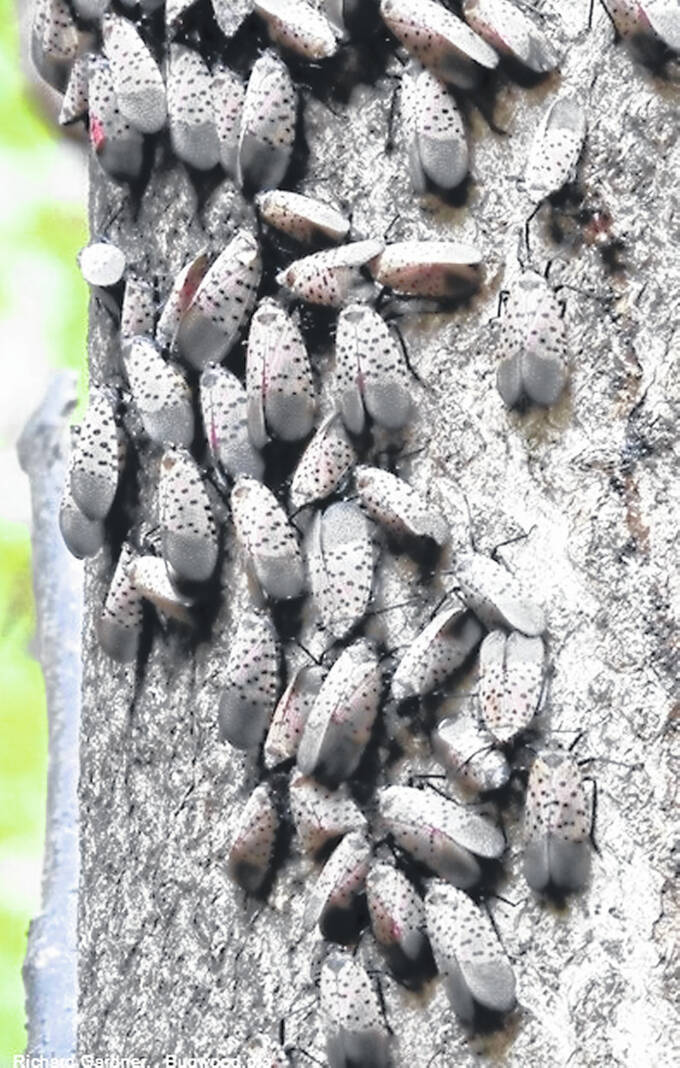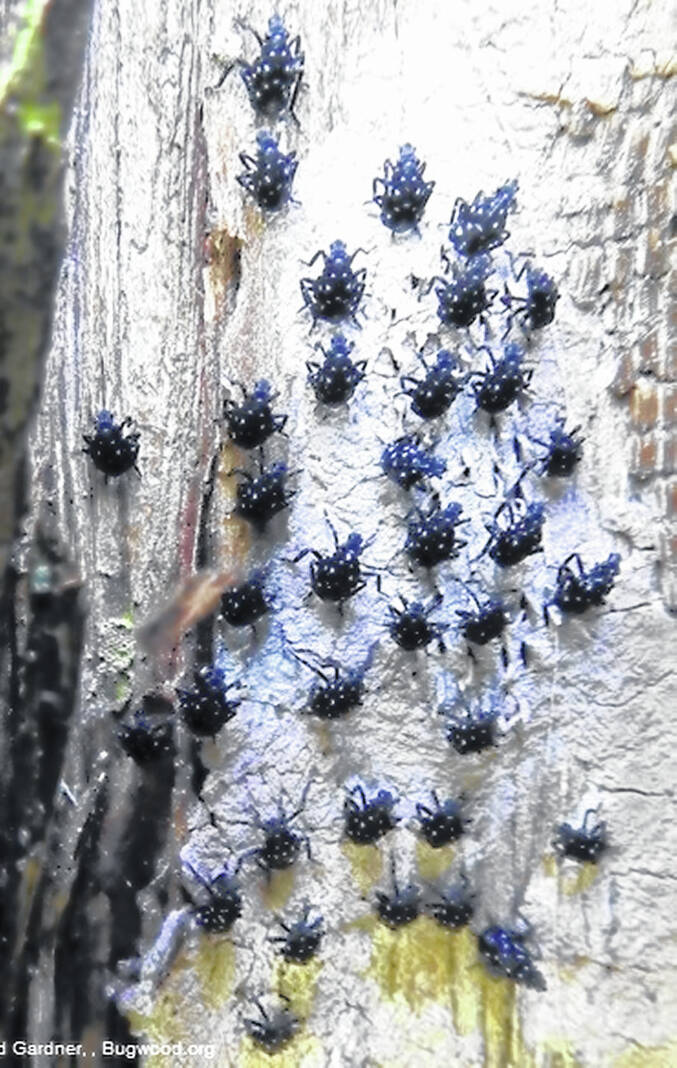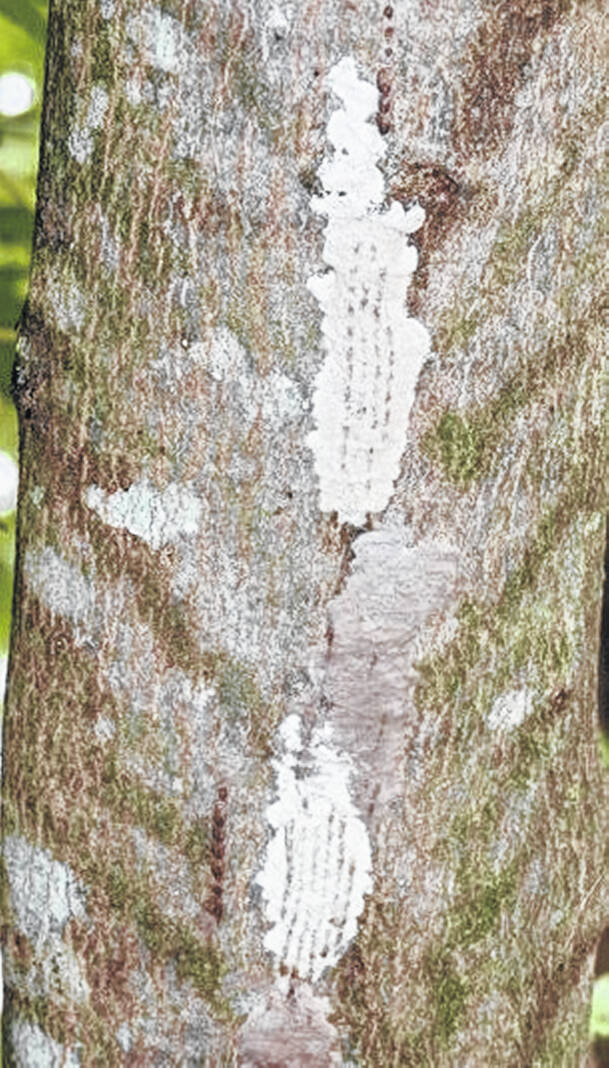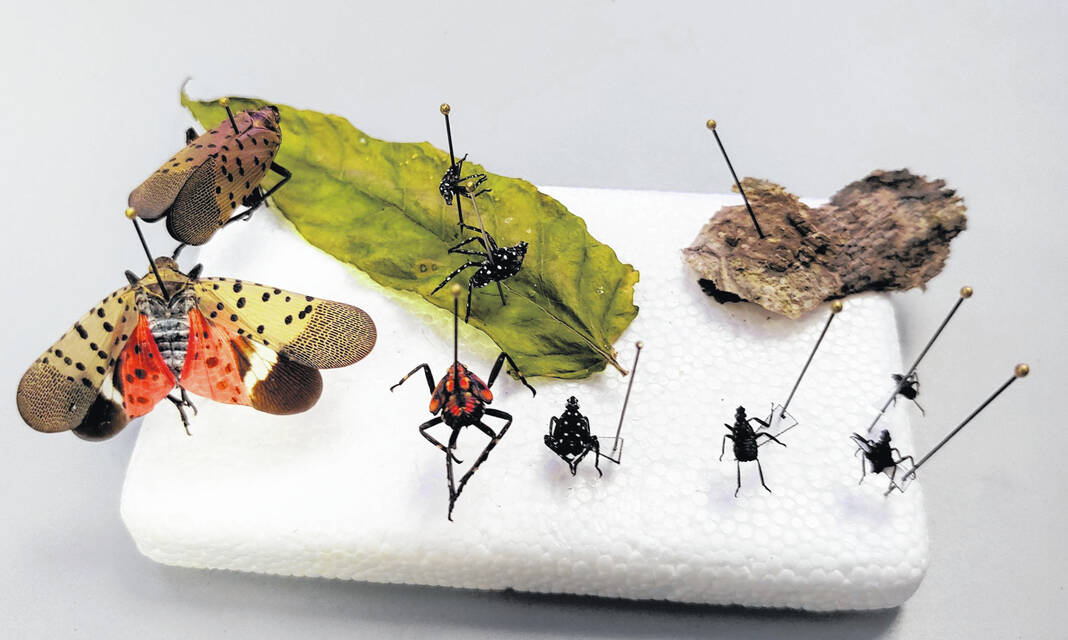



It is time to watch out for Spotted Lanternfly (Lycorma delicatula).
The spotted lanternfly (SLF) is not a fly but a large invasive plant hopper (order Hemiptera, family Fulgoridae) native to Southeast Asia. Don’t be deceived by its pretty looks. It is a major threat to fruit production and nursery landscape growers. Commercial grapes are very vulnerable, threatening the wine grape industry. Its feeding may not kill a plant outright. It stresses host plants so that disease and other insects weaken the plant. In addition, the weeping sap, honey dew, and sooty mold produced by heavy feeding on the plant sap make landscape plants ugly. Yellow jackets and hornets are attracted to the honey dew.
These symptoms may be the first clues you have an infestation. Be aware that other insects and conditions may be the cause of these symptoms. Other signs to look for are egg masses, adults, and nymphs. Egg mases are not only found on tree bark but can be on any hard surface. This includes street signs, fences, buildings, campers, automobiles, train cars, lawn furniture, and more.
Their favorite host plant is the invasive tree of heaven (TOH, Ailanthus altissima), an Asian native. This weed tree, especially along train corridors, helps increase and spread SLF. They will ride the train from one location to another as adults, nymphs, or eggs.
Identification: The adult SLF is surprisingly pretty. They are 1 in long and ½ in wide with a 1 ½ to 2 in wingspan. It has four wings. The front wings are tan to gray with black spots. The rear wings are red with patches of black and white. They have sucking-piercing mouth parts they use to feed from the phloem tissue that contains plant sap.
Life Cycle: There is only one generation of SLF per year. Eggs are laid in the late fall (September -December) and are covered with a protective mud-like coating to protect them. The eggs hatch in the spring beginning in May. The first instar (a developmental stage between molts as insect matures) is quite small. There are a total of four instars resulting in an adult in July. In late fall, the cycle begins again.
Confirmed reports of SLF in Ohio are limited to Jefferson, Cuyahoga, and Lorain Counties. Soon the eggs will be hatching. It is time to begin watching for them. You should report any suspected infestations to the Ohio Department of Agriculture. This link will take you to a page with an online reporting form, https://agri.ohio.gov/divisions/plant-health/invasive-pests/slf or you can call 614-728-6400. As always, direct any questions to your County Extension professional. In Fayette County, contact Sara Creamer at 740-335-1150 or creamer.70@ osu.edu.





